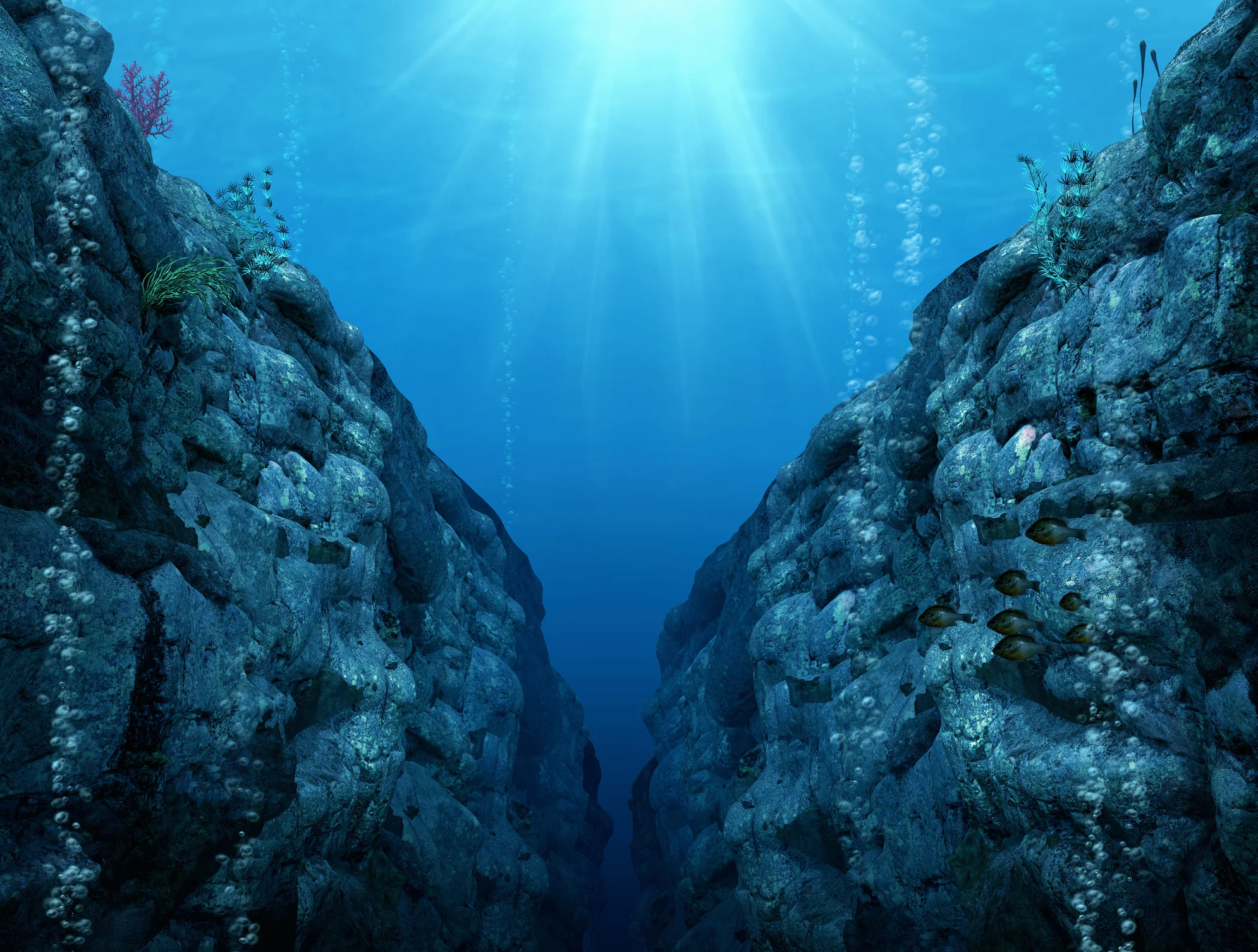
Unseen Images From Inside The Mariana Trench
1. Acorn Worm
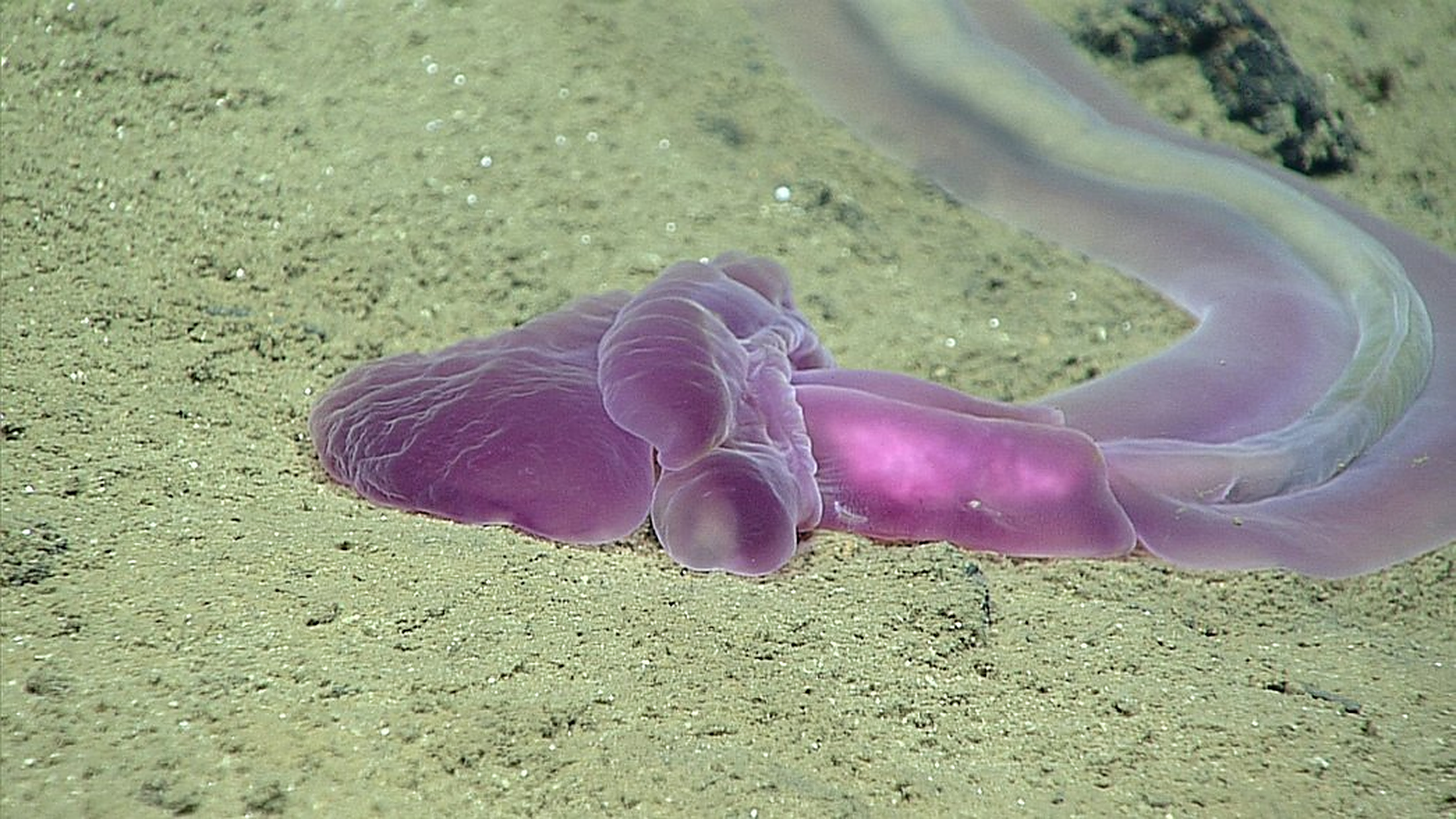
Image Source / australiangeographic.com.au
This strange species (known as the acorn worm) was photographed 4829m deep into the ocean back in 2016. The photo was taken at what is thought to potentially be a mud volcano sight. Their name comes from the bulbous acorn-like heads and there are 111 known species of acorn worm in the world.Advertisement
2. Cusk eel
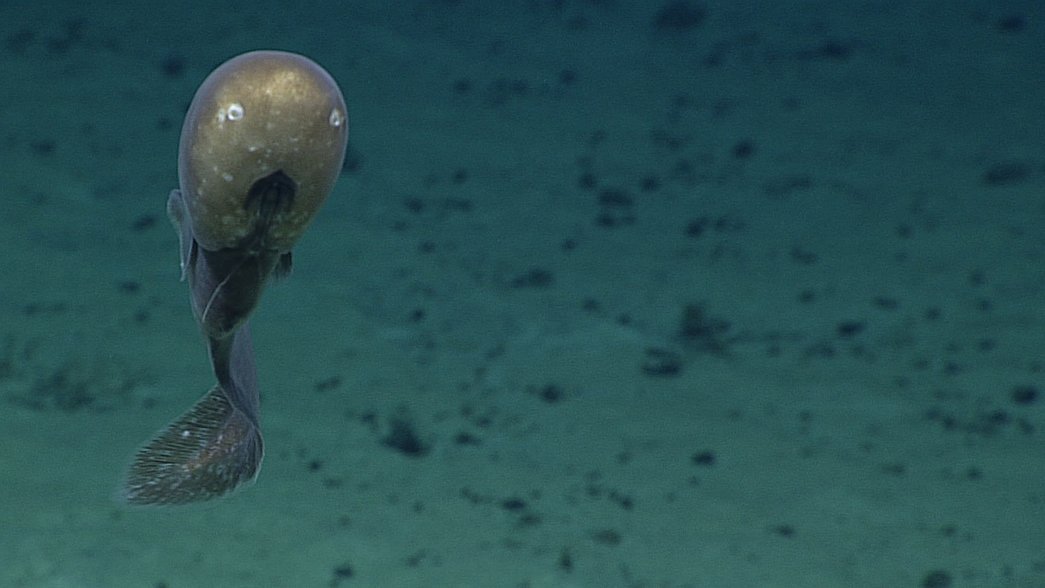
Image Source / australiangeographic.com.au
The cusk eel is thought to be a potentially new type of species which was discovered in 2016. This photograph was taken over 3000m deep into the ocean. Despite the name, this species actually are not eels and instead belong to a family of their own.Advertisement
3. Unusual jellyfish
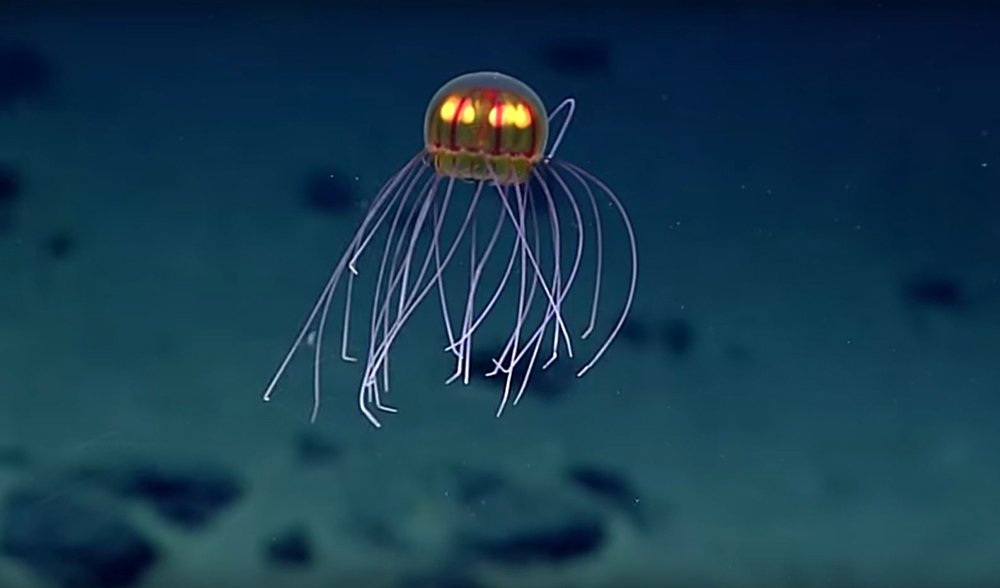
Image Source / australiangeographic.com.au
This strange looking jellyfish was discovered in the Enigma Seamount, at 3700m deep! The footage was captured on film during a deep sea dive, observing the movements of the newly discovered jellyfish. Marine biologists have identified this as the species "hydromedusa".Advertisement
4. Long-tail red snapper
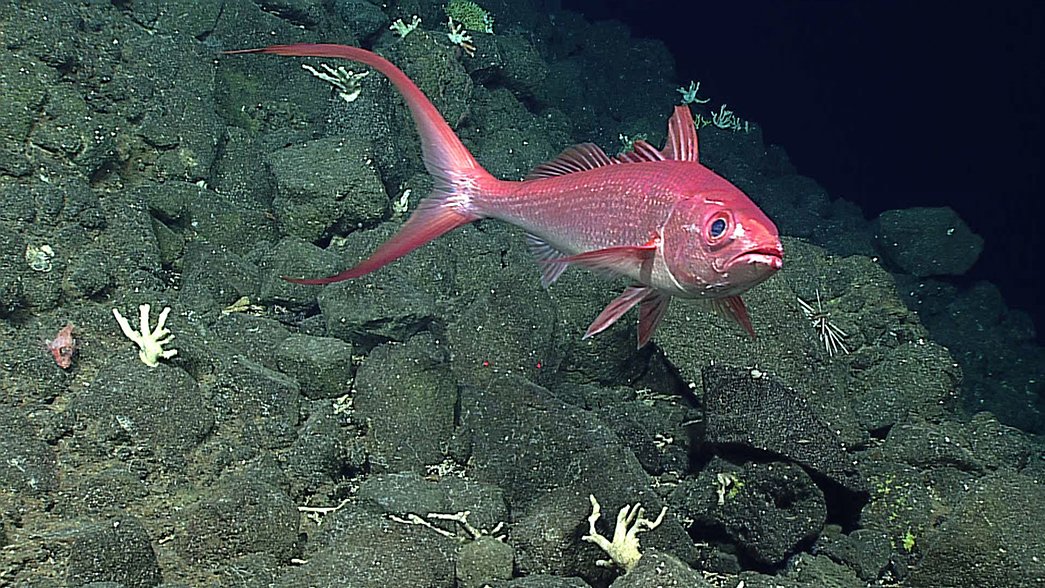
Image Source / australiangeographic.com.au
Divers explored Pagan, one of the biggest volcanoes in the Mariana Arc back in 2016. Here they came across the brightly coloured species of fish, known as the long-tail red snapper, or ruby snapper. This species is also commonly found around Hawaii.Advertisement
5. Hermit crab
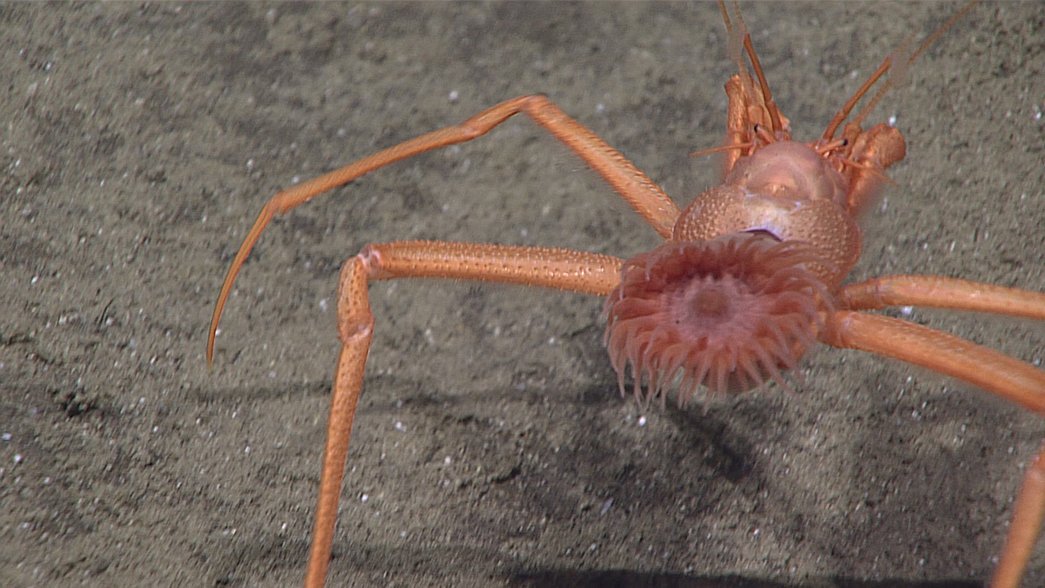
Image Source / australiangeographic.com.au
As you can see, this strange looking parapagurid hermit crab has an anemone living on top of it. When usually a hermit crab would have a snail-like shell to inhabit, this crab's anemone kind of secretes a shell for the crab. This was discovered during a deep sea dive in 2016.Advertisement
6. Small octopus
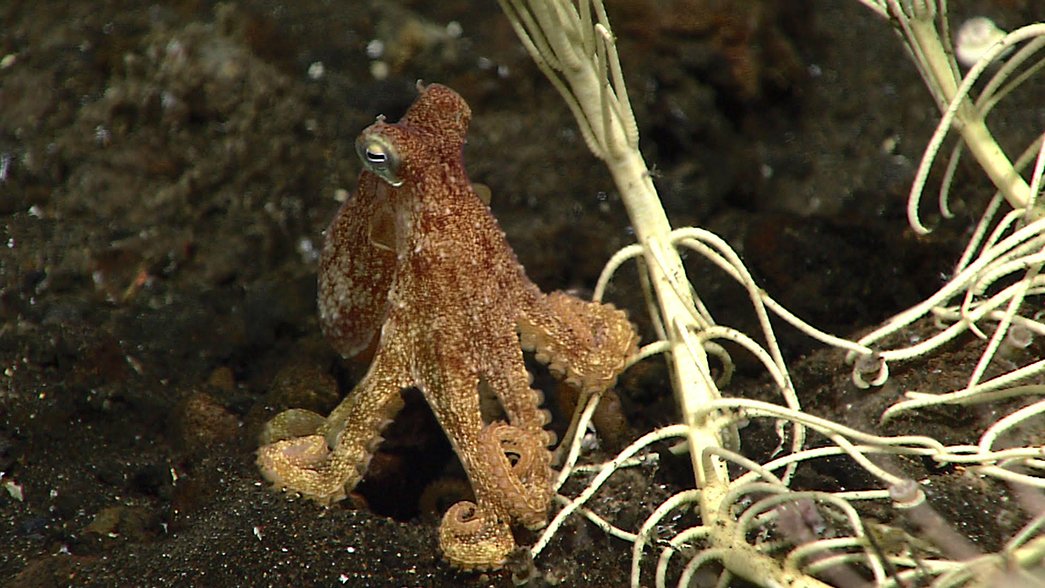
Image Source / australiangeographic.com.au
Divers submerged themselves into an active volcano, part of the Vents Unit of the Marianas Trench Marine National Monument, known as Esmerelda Crater. Whilst they were here, they found this tiny little octopus sitting next to the equally tiny sea lilies.Advertisement
7. Ghost fish
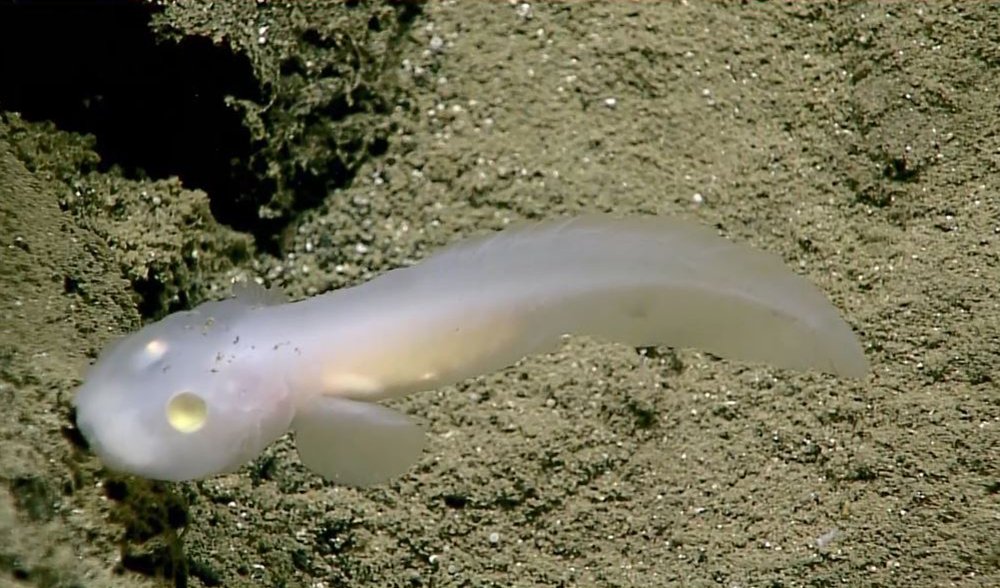
Image Source / australiangeographic.com.au
At 2500m deep into the Mariana Trench, this 10cm long see through fish was discovered by divers. The fish's eyes and transparent body give it a ghostly and haunting appearance. It's unclear what species of fish this is or what family it belongs to.Advertisement
8. Crinoid
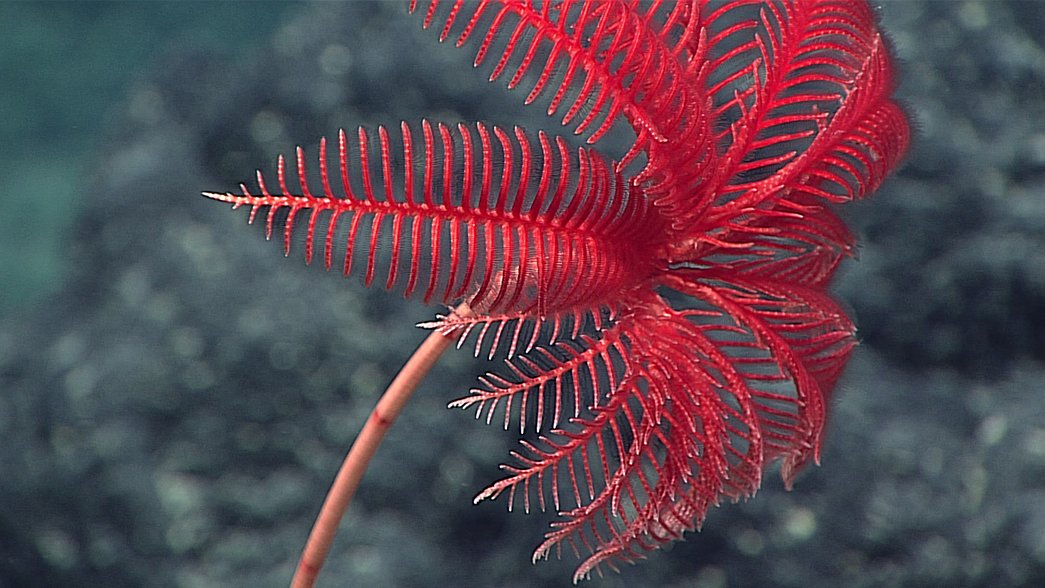
Image Source / australiangeographic.com.au
This vibrant crinoid is thought to be a type of Proisocrinus ruberrimus. This kind is known to be found in the deep sea, but also in the central pacific. This stunning photograph was taken near the top of the one of the unexplored seamount arcs of the southern Marinas.Advertisement
9. Hydromedusa jellyfish
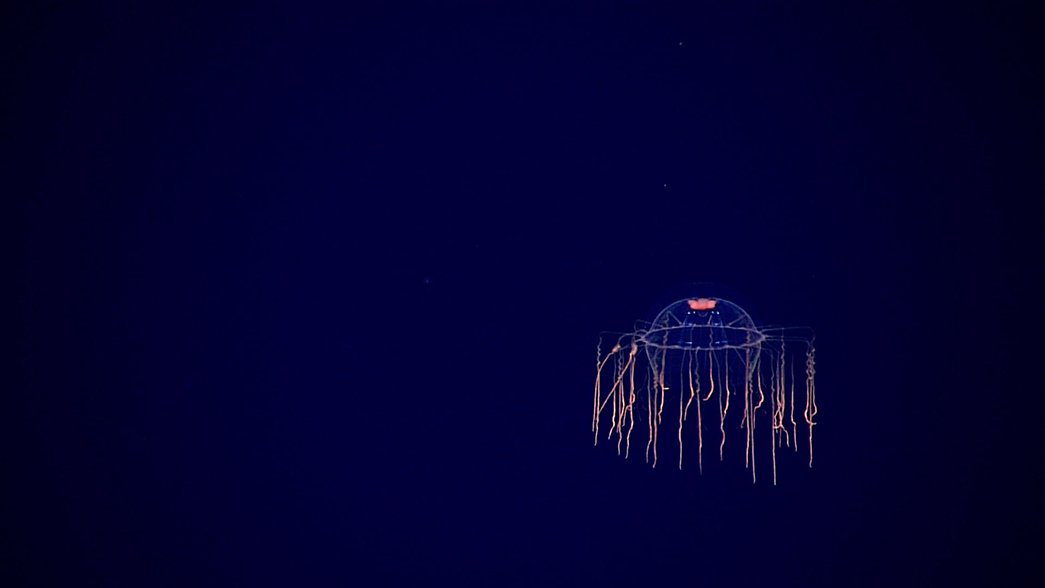
Image Source / australiangeographic.com.au
Hydromedusa jellyfish are often seen seasonally, from late spring until early fall. This photo was captured in the July of 2016 at 800m. This type of species typically live for a few days, however, others have been known to survive for several months.Advertisement
10. Oblique-banded snapper and eel
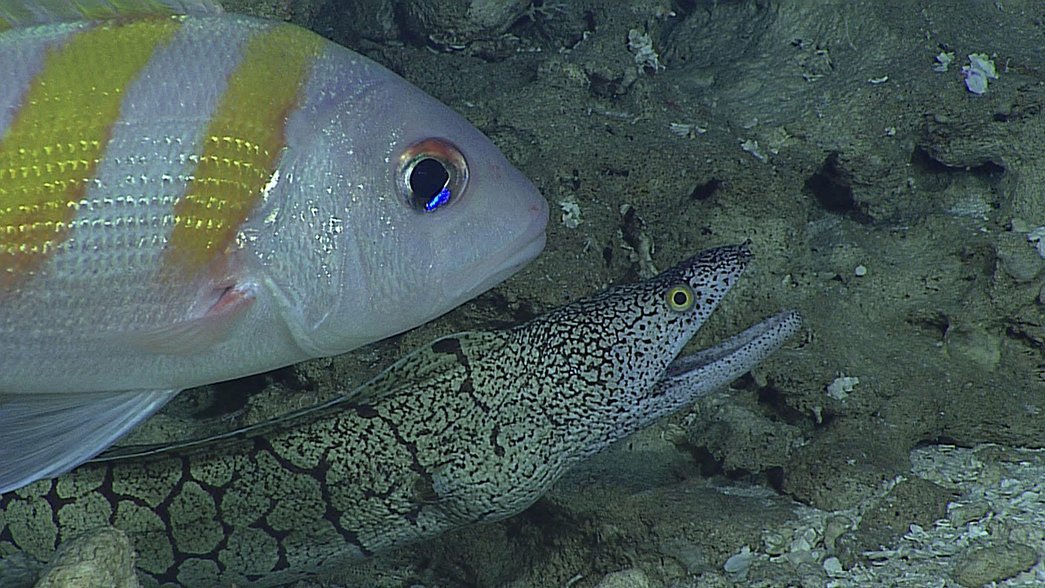
Image Source / australiangeographic.com.au
At 250m along Farallon de Medinilla, these two were spotted swimming together along the slopes. The larger fish is an oblique-banded snapper, alongside a moray eel. Often, these fish will be found in deeper waters or amongst rocky areas and reefs, as in this photograph.Advertisement
11. Groppo
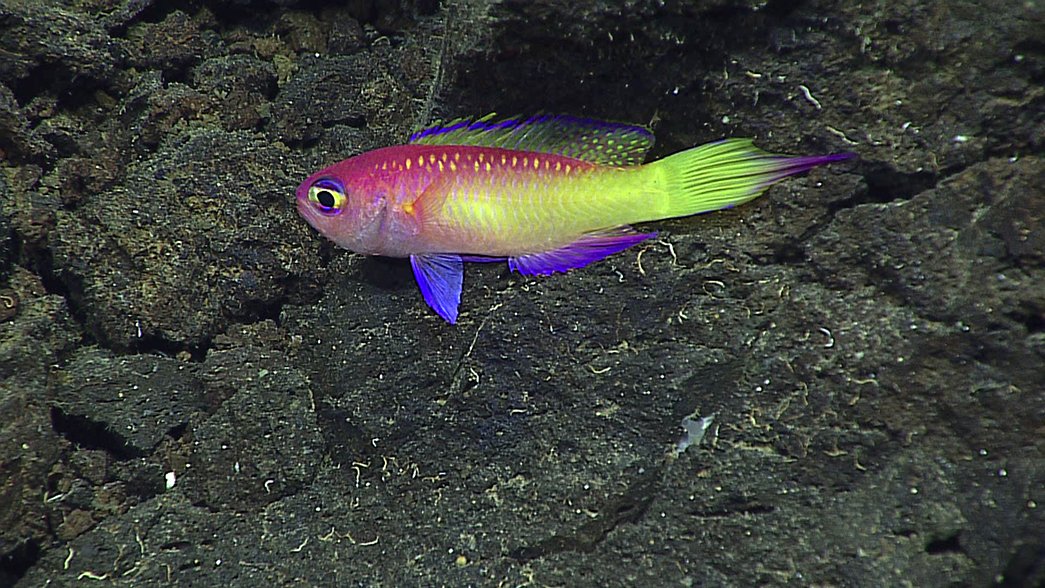
Image Source / australiangeographic.com.au
This fish is known as a groppo for short, formally grammatonotus. They are stunningly colorful in appearance and are native to the Indian and pacific ocean, usually found in deep waters. This particular fish was found swimming amongst the rocks at Eifuku Seamount.Advertisement
12. Black Coral
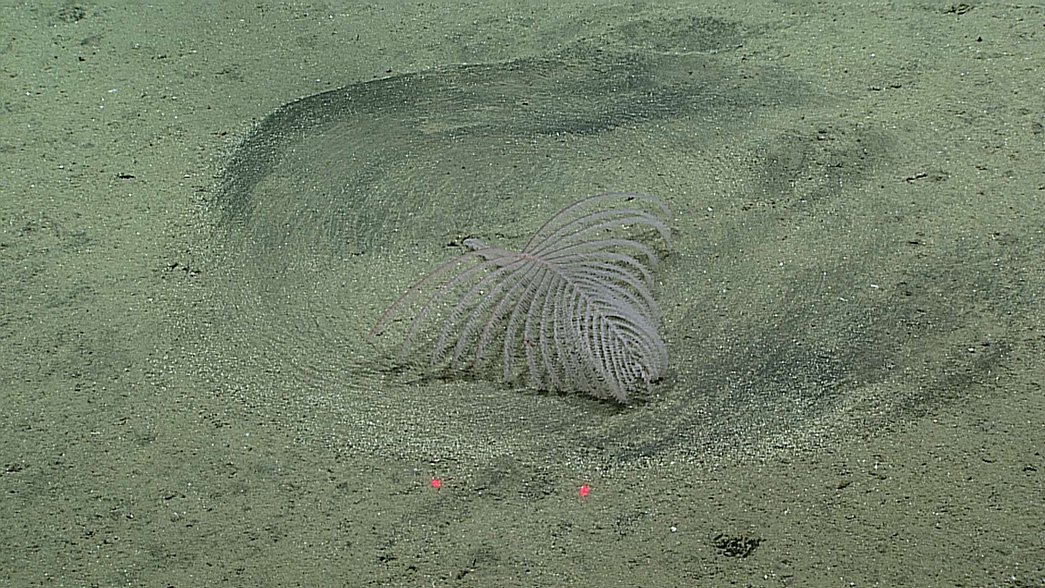
Image Source / australiangeographic.com.au
This type of coral species is known as schizopathes coral. This unusual kind is black in color and has been photographed here, along with the many circles made in the sediment by its sweeping movements. The photo was taken at 2598m at Explorer Ridge Deep.Advertisement
13. Fecal coil
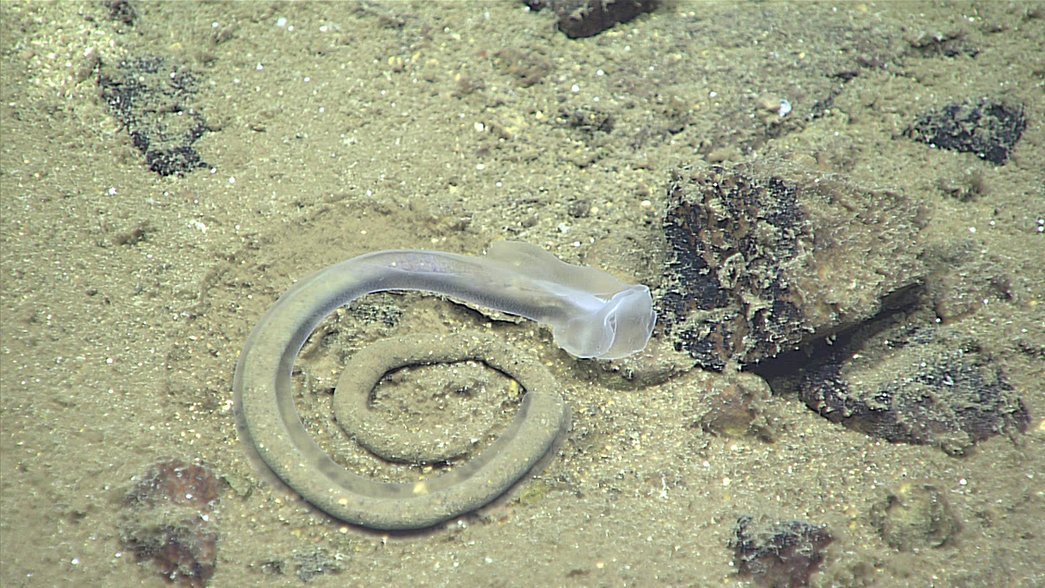
Image Source / australiangeographic.com.au
Here is another acorn worm, formally known as an enteropneust. The photograph was taken at an astonishing 4839m deep, which is one of the deepest parts of the Marianas Trench. Transparent in color, the worm allows us to see the fecal coil it is leaving behind.Advertisement
14. Eel
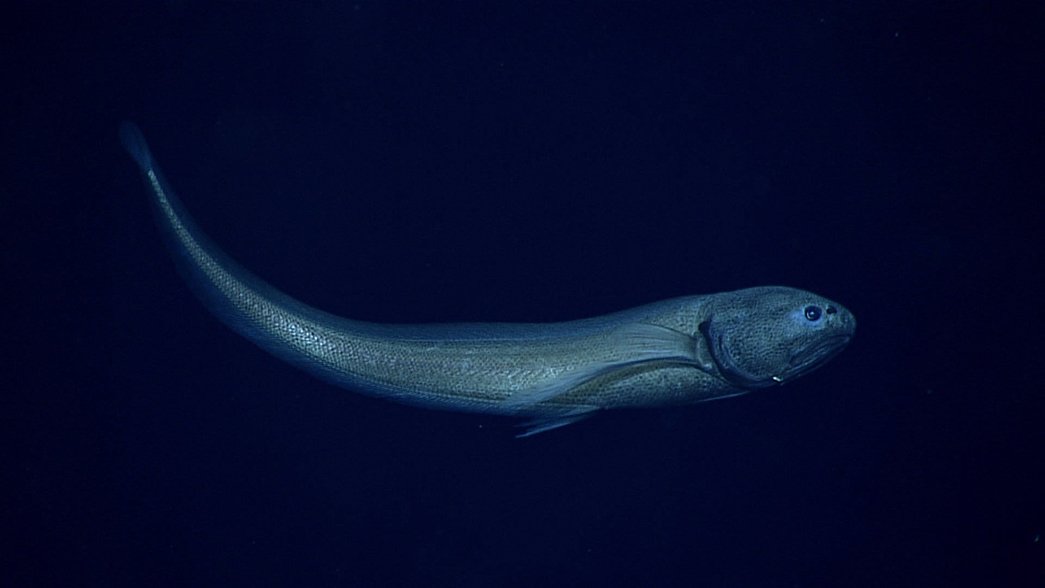
Image Source / australiangeographic.com.au
At over 2000m deep into the Cretaceous seamount, east of the Marianas Trench, another breed of cusk eel has been photographed by divers. It's expected that this particular eel belongs to the pinnatus species. They are known to swim in the deep waters.Advertisement
15. Octopod
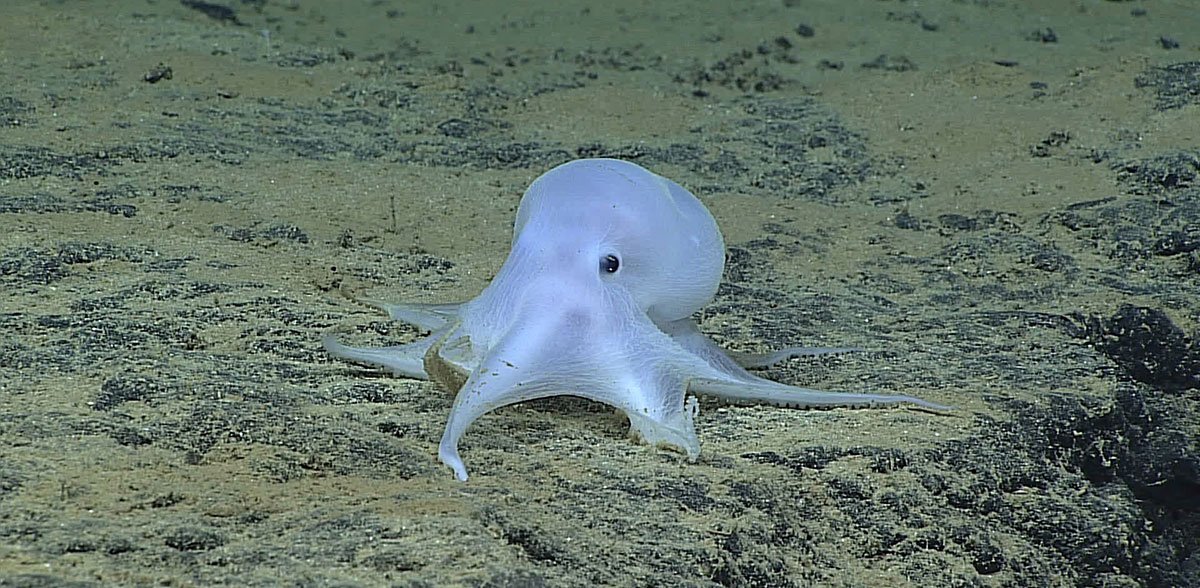
Image Source / australiangeographic.com.au
More than 4000m deep, this little octopod was found northeast of Necker Island in the Hawaiian Archipelago. Marine biologists have remained unclear on what exact species or genus this particular octopod belongs to. This is due to it's unusual appearance.Advertisement
16. Anglerfish
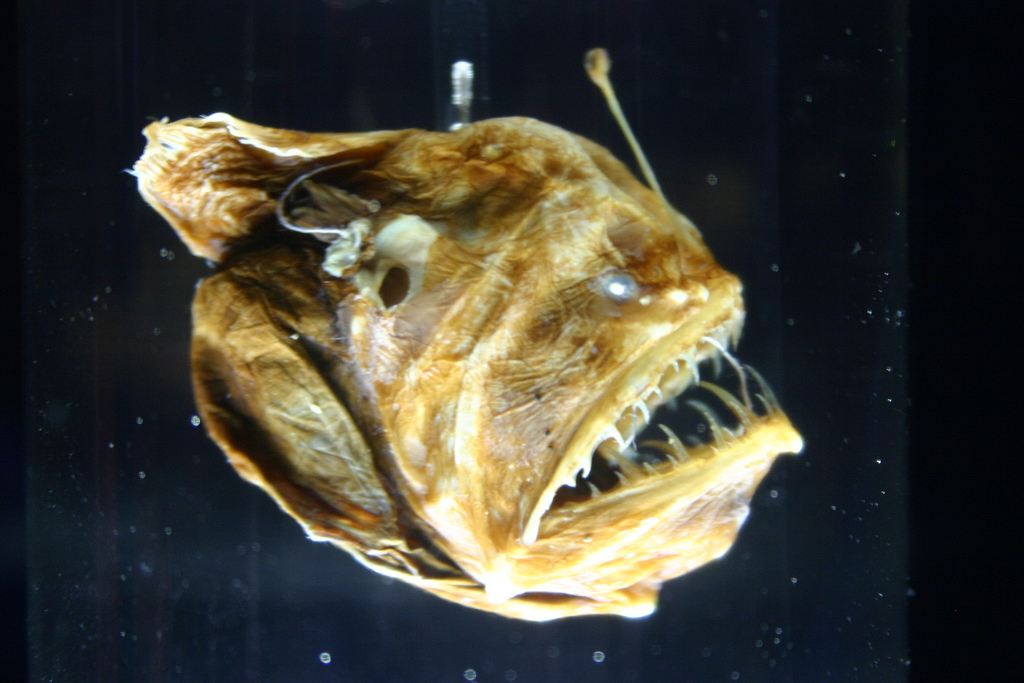
Image Source / outlookindia.com
The anglerfish, which has been nicknamed the black sea devil, is arguably one of the scariest fish found in the deep of Marinas Trench. As seen in the film Nemo, this fish attracts smaller fish using its lightbulb-like antenna, making them much easier to catch.Advertisement
17. Predatory Tunicate
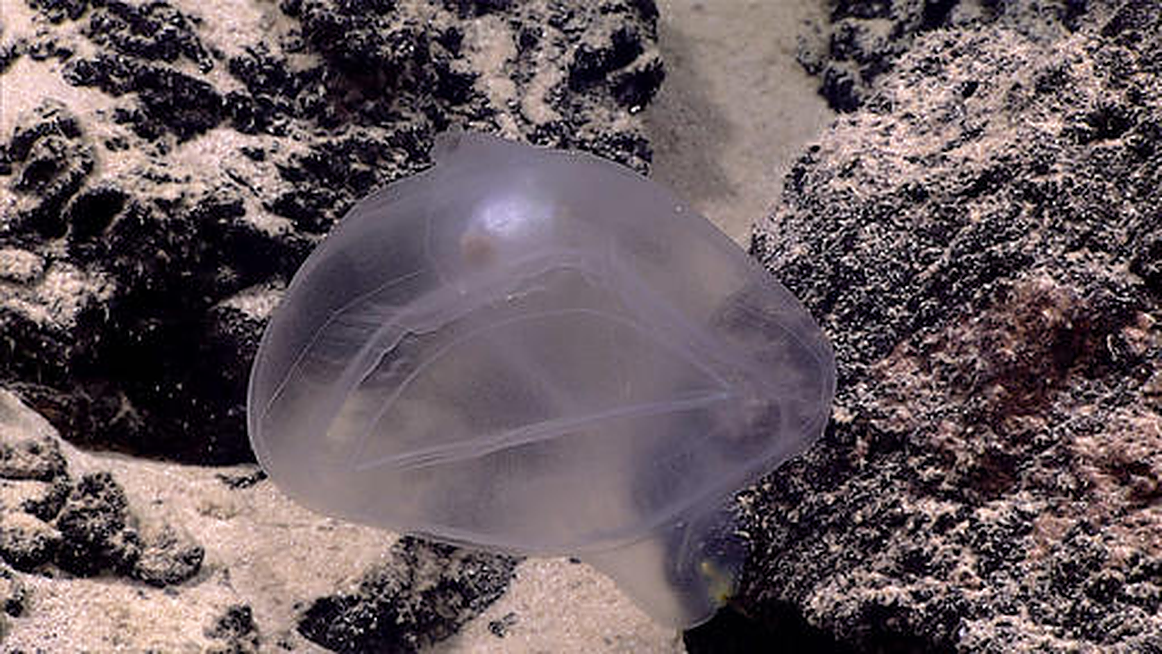
Image Source / phys.org
The predatory Tunicate gets its name from the way that it catches its prey. Its mouth closes quickly like a venus fly trap whenever fish or crustaceans float inside. This species of fish can be found up to 1000m deep, usually within the Monterey Canyon.Advertisement
18. Plastic Bag
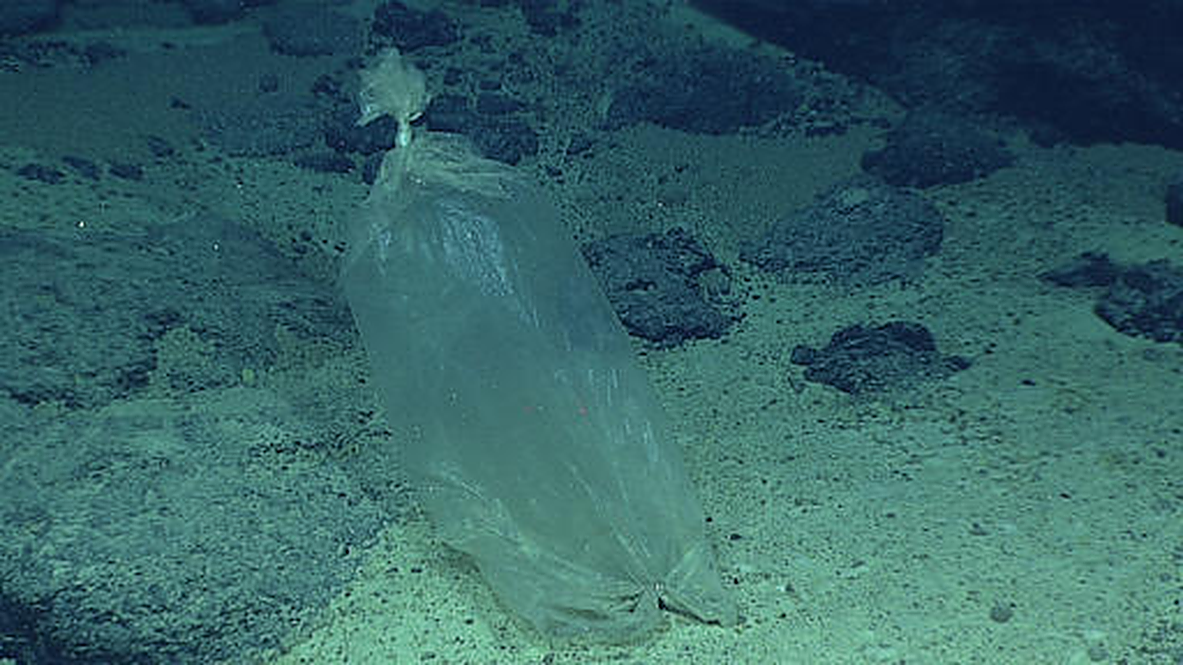
Image Source / phys.org
This image is proof that human impact reaches all corners of the world, even the deepest depths of the ocean. This sad image shows a bag floating around, filled with water. And here it will stay for years and years to come, potentially never fully decomposing.Advertisement
19. Blind lobster
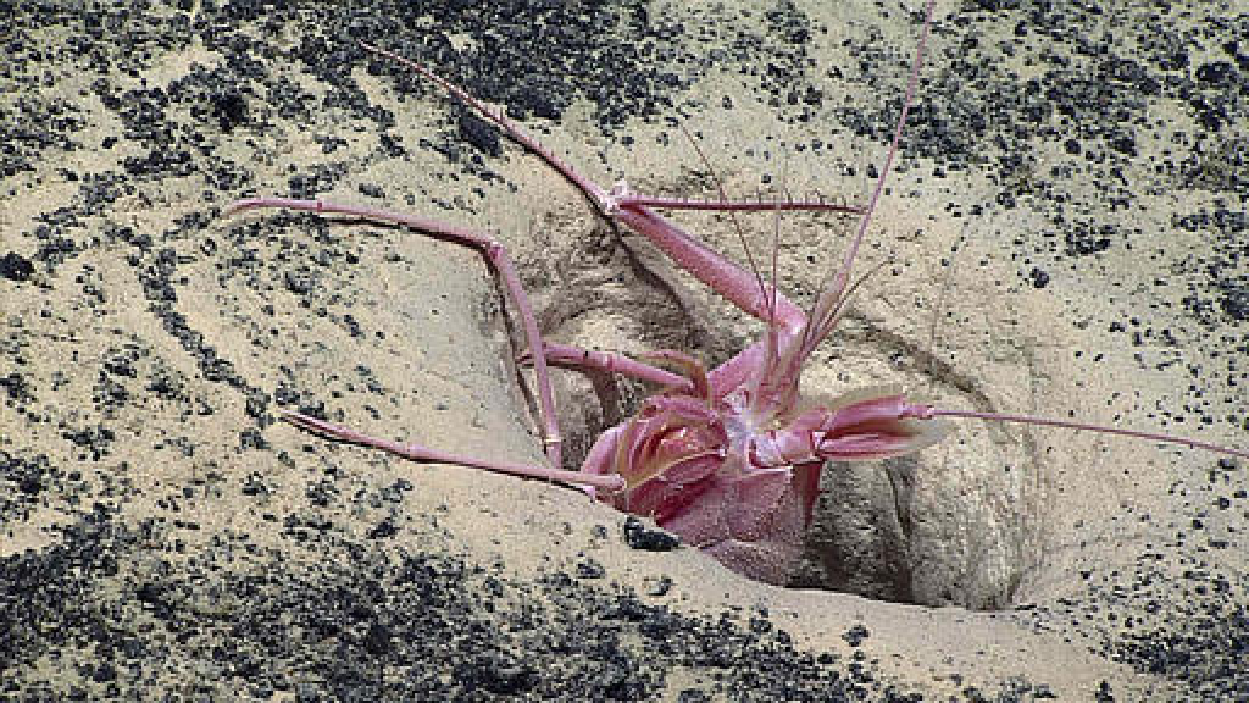
Image Source / phys.org
This newly discovered type of lobster has been found to be completely blind. Marine biologists believe this is due to adaptation to life in the sea. Found around 300m deep, this species also has unusual claws which differ to their lobster relatives.Advertisement
20. Benthic comb jellyfish
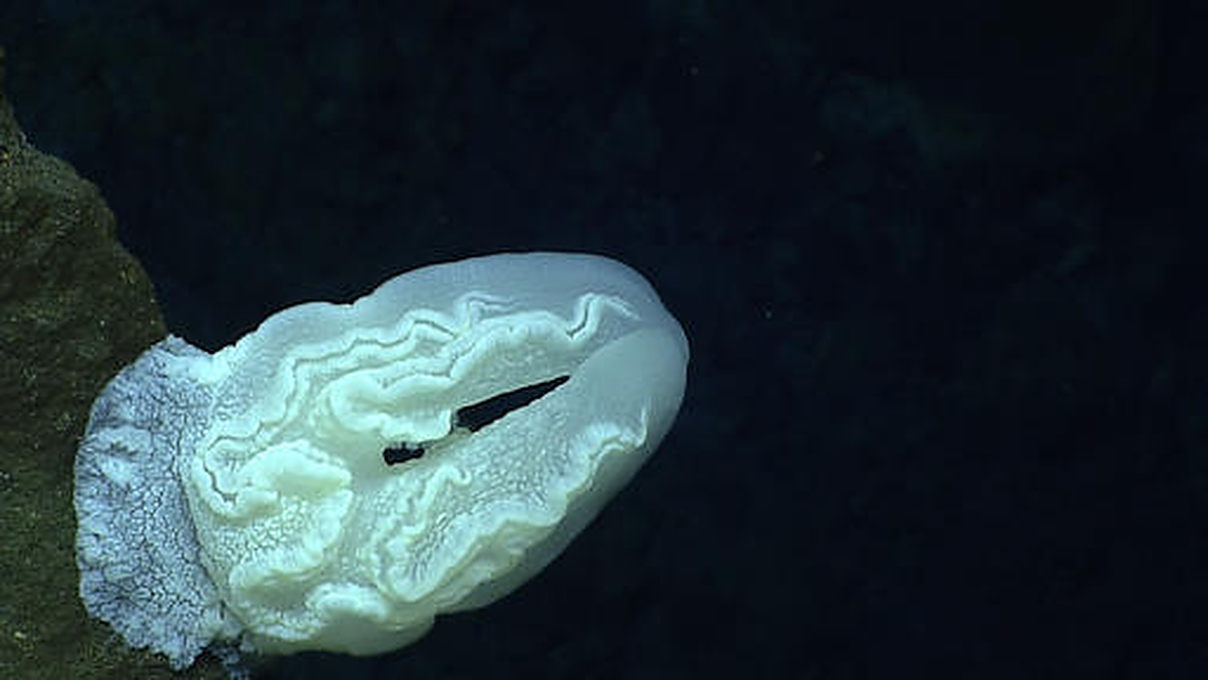
Image Source / phys.org
Most commonly native to the Ryukyu Trench of Japan, this species is known as the benthic comb jellyfish. Usually, these jellies are found at a depth of around 7,217m. Not much is known to biologists about this species, for example, what their diet consists of.Advertisement
21. Cutthroat eel
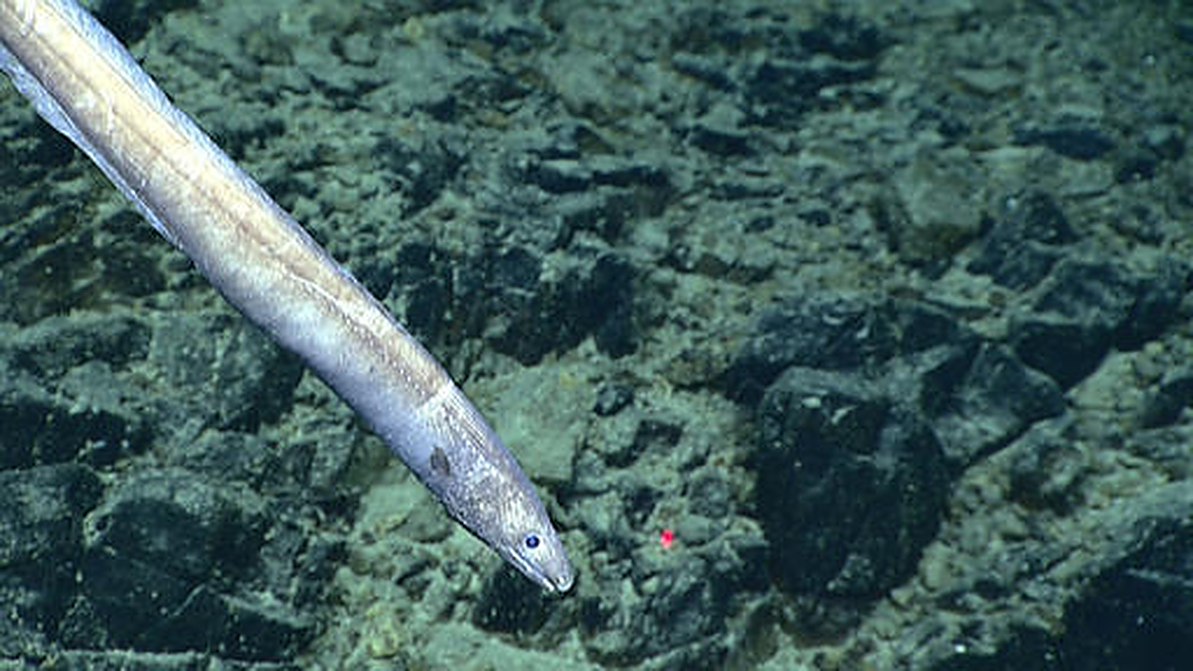
Image Source / phys.org
Mostly found in deep waters, usually around 3,700m, this type of cutthroat eel is part of a family. They've been spotted all over the world and are easily distinguished by their telescopic eyes. They can range anywhere from 9.1 to 53 inches in length.Advertisement
22. Purple orb
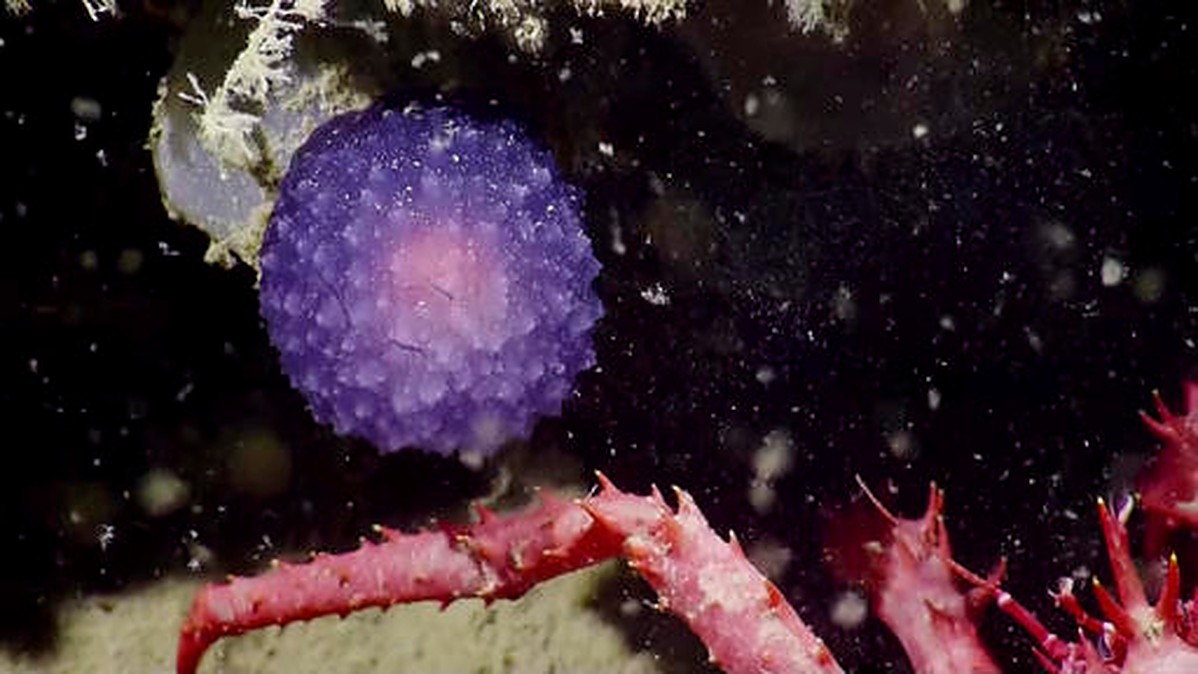
Image Source / phys.org
Scientists still aren't entirely confident on what this purple orb-like creature actually is. There have been suggestions that it may be an egg sac or some kind of embryo, but these theories have still not been confirmed. The orb is bright purple in color and has only been discovered in deep waters.Advertisement
23. Vampire squid
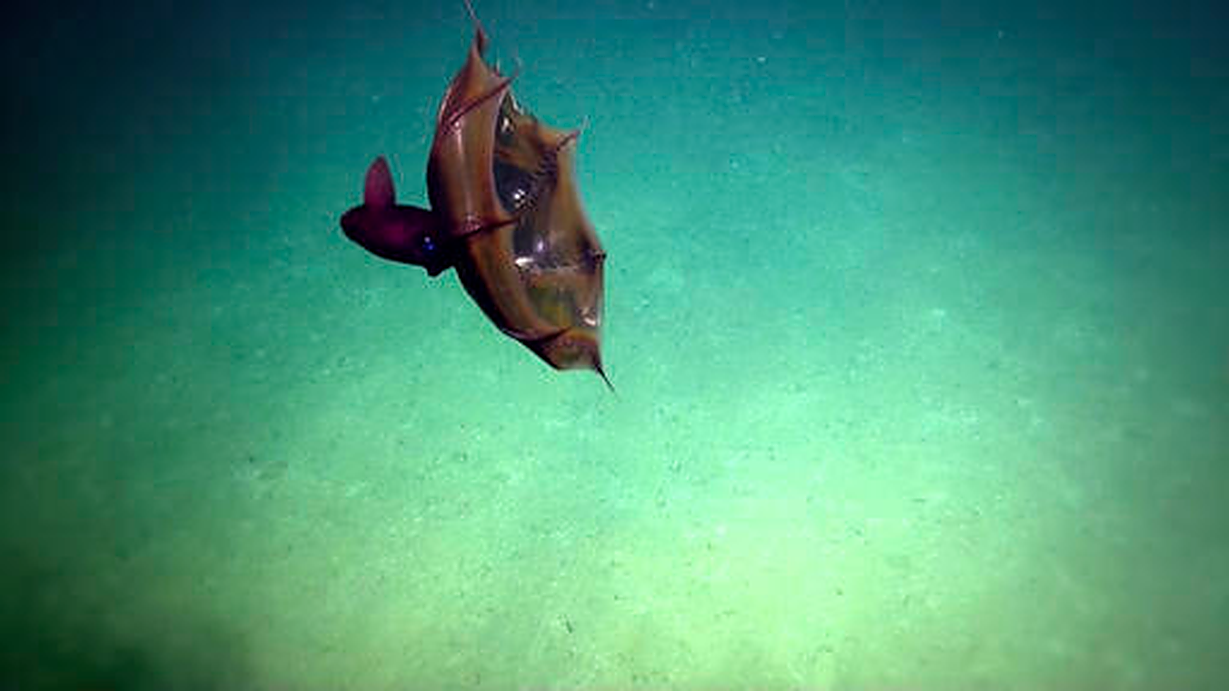
Image Source / phys.org
Vampire squids are both predator and prey. There has been discoveries of this squid inside the stomach contents of whales, sea lions and other large sea mammals. They are deep sea dwelling creatures and can be found in tropical and temperate oceans.Advertisement
24. Benthocodon
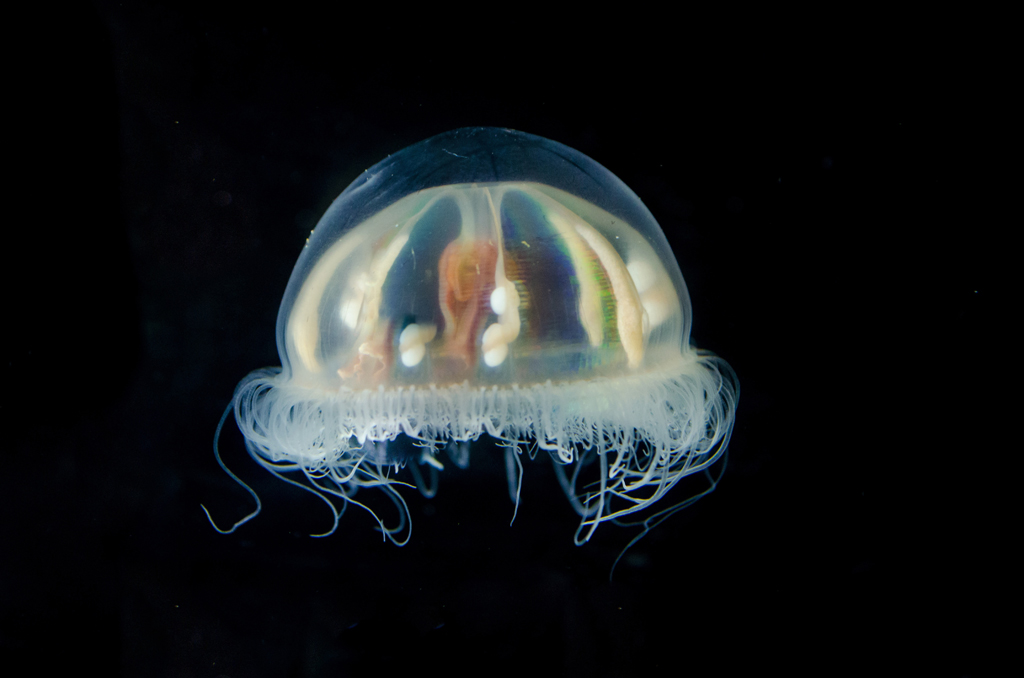
Image Source / outlookindia.com
The Benthocodon hyalinus is a unique type of jellyfish. Instead of being transparent, this species is opaque. The fish has approximately 1,500 tiny tentacles which it uses to gracefully navigate the depths of the ocean. Their diet consists of small crustaceans and tiny organisms.Advertisement
25. Squid
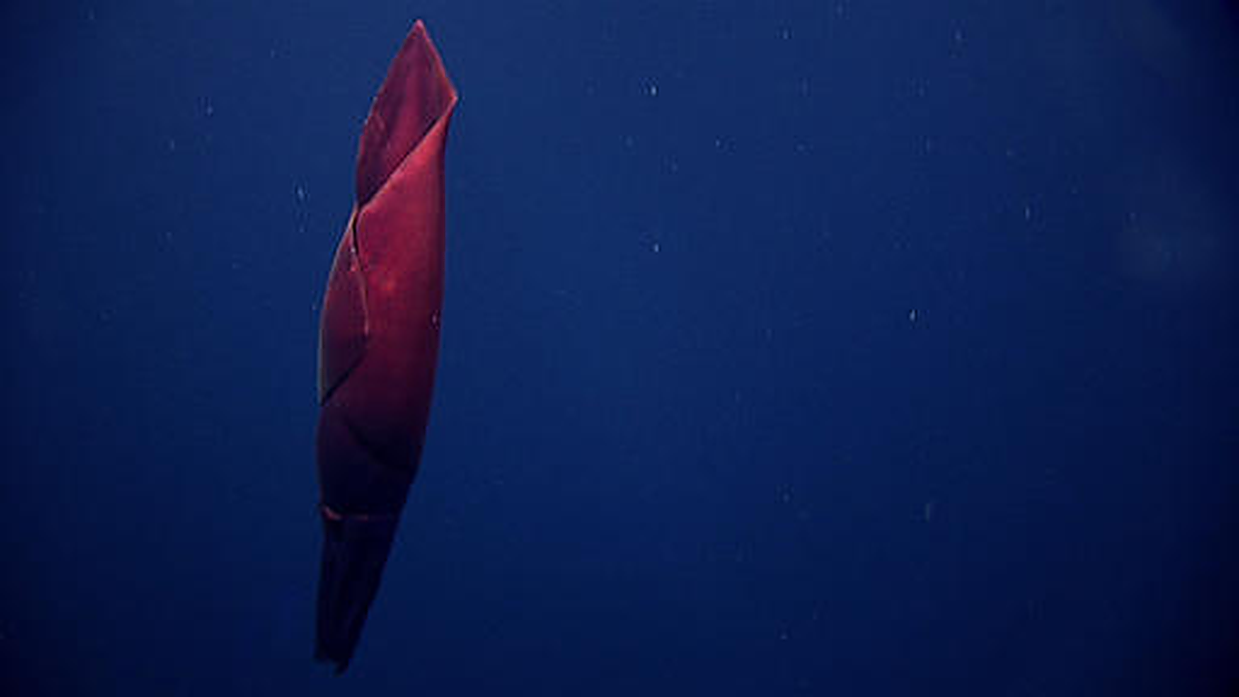
Image Source / phys.org
During an expedition to explore the more unknown and poorly understood parts of the deep Pacifc Ocean, scientists discovered an eerie stalker. They noticed this rare type of squid, which is rarely seen alive, following and lurking behind the sea vehicle.Advertisement
26. Wreckage
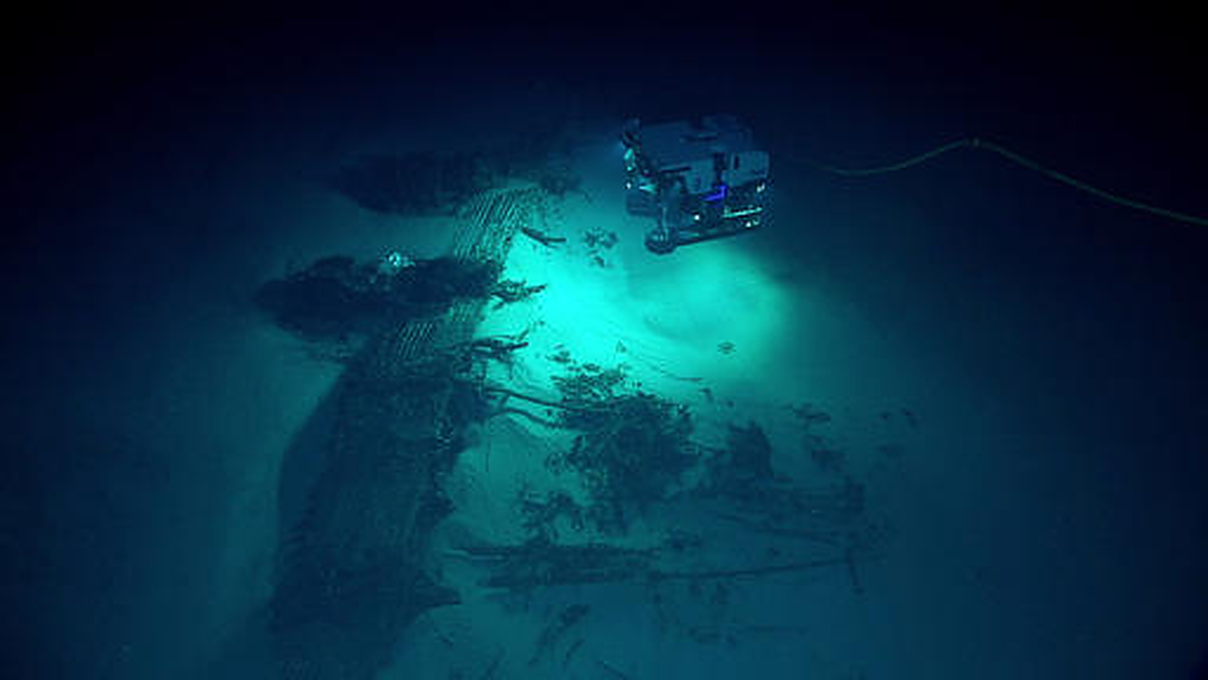
Image Source / phys.org
This image shows a sea vehicle in the depths of the ocean, around 2000m deep into the Mariana Trench. The vehicle is exploring a wreckage, discovered laying at the bottom of the ocean. It's unclear where this wreckage came from or how long it has been there.Advertisement
27. Hydrothermal chimney
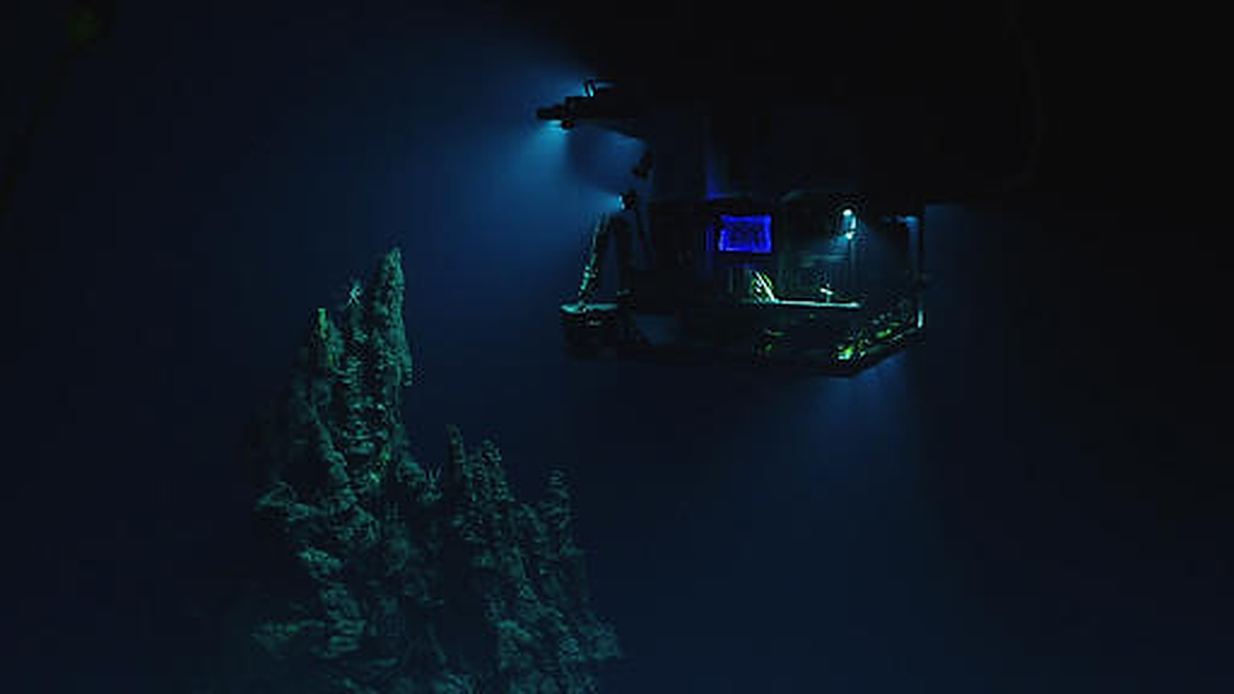
Image Source / phys.org
This photograph shows a remotely operated vehicle which has voyaged deep into the depths of the ocean. Here it is observing a 14m hydrothermal chimney. This type of vent are most commonly discovered near volcanically active areas. They are an opening on the seabed, where geothermally heated water is pumped out.Advertisement
28. Rattail
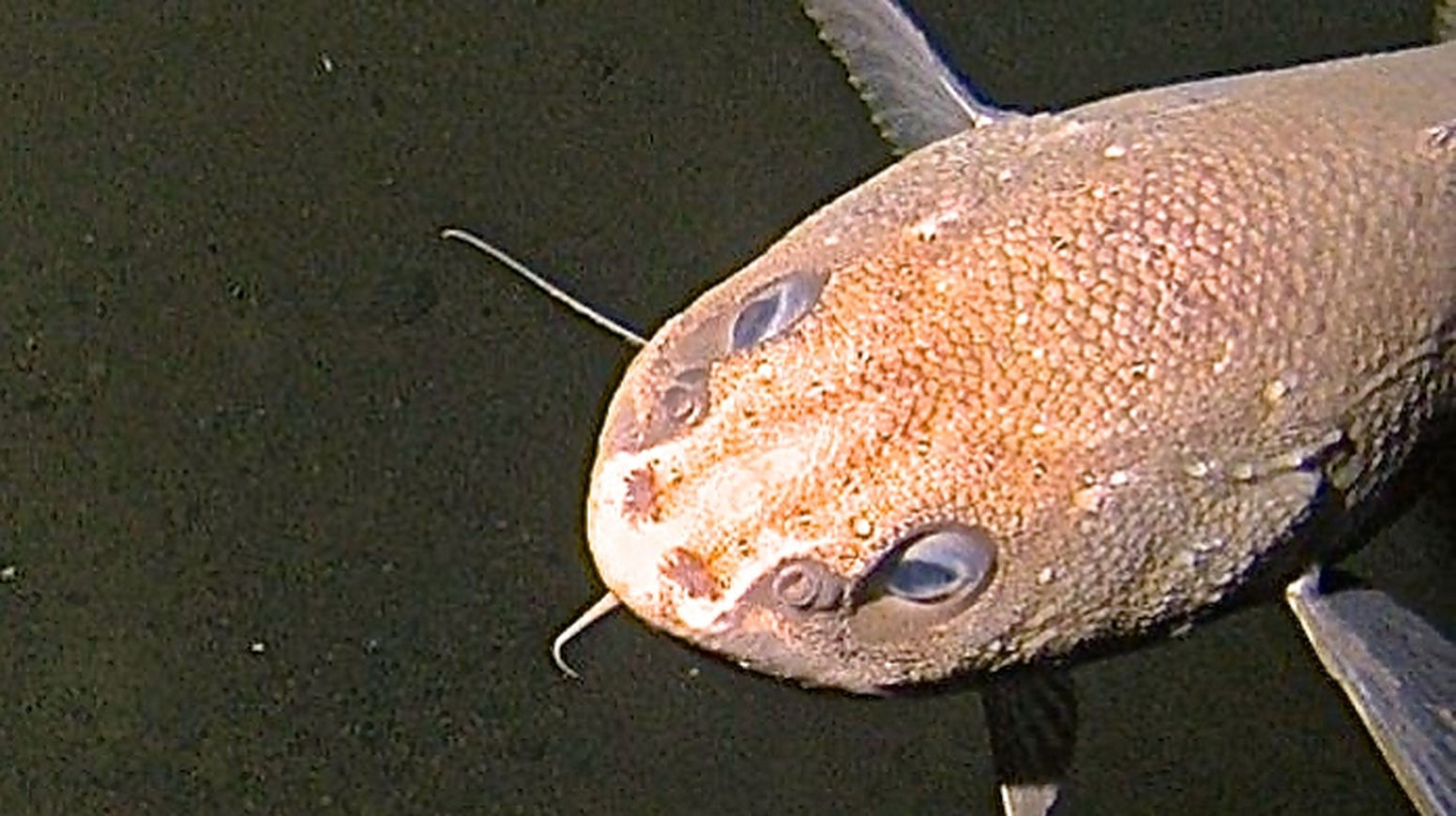
Image Source / phys.org
This species of fish are one of the most commonly found in deep waters and are known as rattails, or by their scientific name grenadiers. You can recognise this species by the large head, mouth and eyes. Unusually, they have been known to be both solo animals and also live in large schools.Advertisement
29. Comb jellies
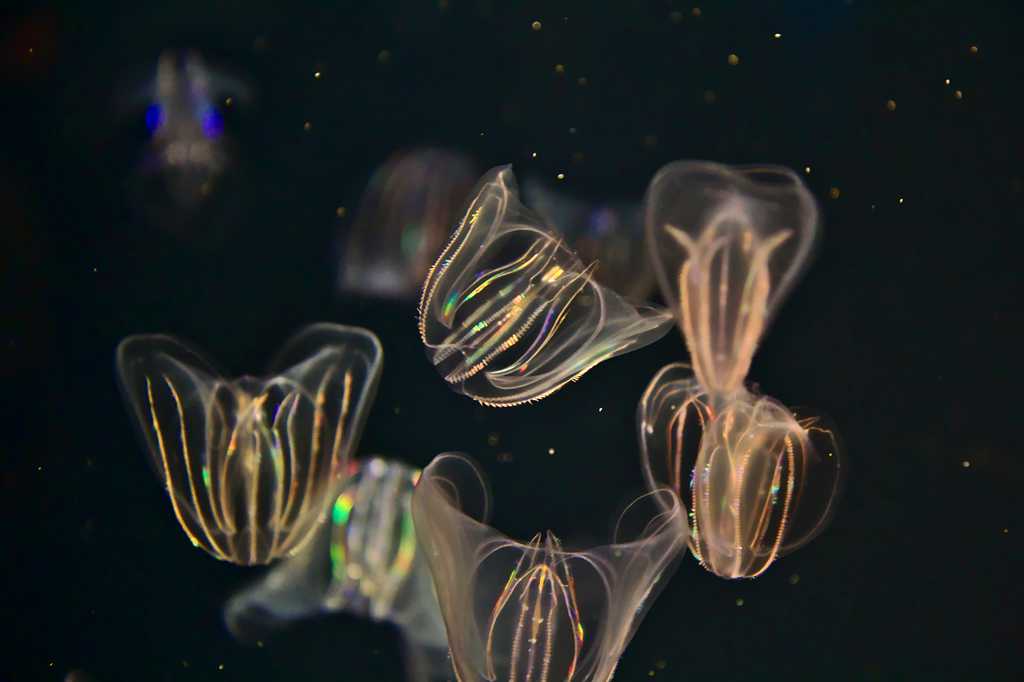
Image Source / outlookindia.com
This type of jellyfish are mesmerising to look at. They move around by using their comblike plates. Their bodies will diffuse any color or light that lands on them. They range from 3mm - 5 feet and are known to be vicious. Sometimes, they will even attack their own kind.Advertisement
30. Dumbo octopus
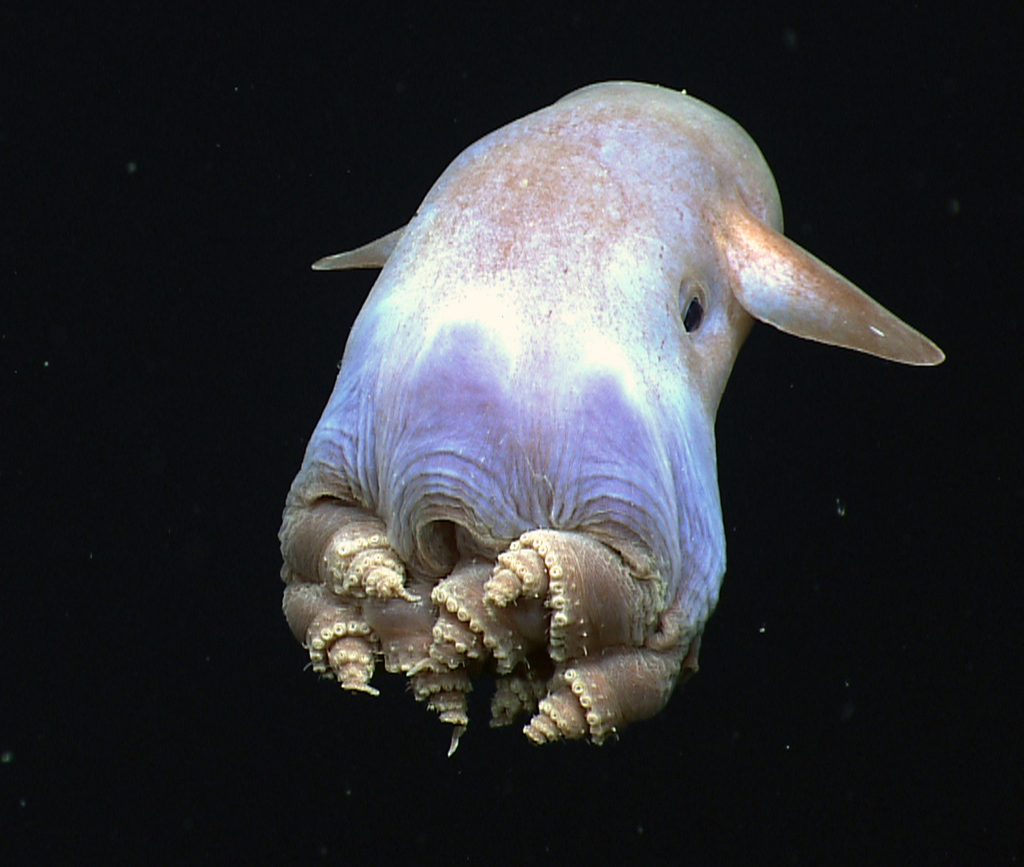
Image Source / outlookindia.com
Earning its name due to the floppy ears and adorable eyes, the dumbo octopus can be found around 9,800m deep into the Mariana trench. But, although they appear cute, this species is a predator around 12" in size and has been known to swallow prey whole.Advertisement
